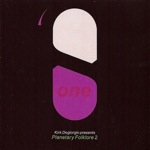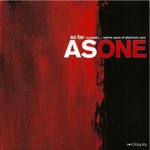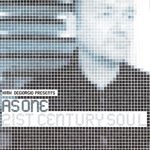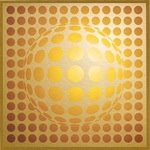
API "Lunchbox"
It may well be time to finally enter the 500 series format of audio processors. The format has seen a huge growth in design options since API announced various alliances with other rack manufacturers. The format has grown from strength to strength with a multitude of new and established boutique audio manufacturers releasing 500 series format designs on a seemingly regular basis.
NAMM 2009 saw the announcement of yet more 500 series designs - and despite the current weakness of the £ against the $, it does now seem a seriously good time to invest in this space-saving, cost-effective format.
The original API 500 series Mic Pre and EQ are still a solid standard for the format, but it's a few new designs that have really caught my eye recently.
Compressors:

Alta Moda AM-10
I'm a big fan of FET based compressors. Both the UA1176 and Daking FET II compressors feature heavily in my productions from the past several years. The AM-10 is a FET-based compressor/limiter that packs a lot of features into a small footprint.
It has both stereo linkable compression and/or limiting sections, has a 'vintage' feedback style topology - soft-knee type for compression, hard-knee type for limiting. Attack and release for the compression section can either be manually controlled over a wide -range or set to Auto. The limiter can be set to Fast or Slow.
Both compressor and limiter have hi-pass filter sidechain settings useful for avoiding low-frequency caused pumping and have useful LED gain reduction and output displays.
The finishing touch is the on-board ability to perform 'parallel compression'. Using the units Mix section, both the dry and effected signals can be blended - allowing the subtle reinforcement of audio without the loss of the source's original dynamics.
Obviously the unit will ultimately be judged by its sound, but design-wise the only downside I can potential see is the rather limited metering (a problem for all 500 series modules due to sheer lack of space). Everything else is logically and neatly laid out, with neat little toggle switches and dual concentric knobs enabling a large feature set to be crammed into the small 500 series format.
Price-wise it is excellent value. Vintage King currently listing them at just under $700.

Chandler "Little Devil" Compressor
Another FET-based design, this time from US manufacturer Chandler - best known for their units based upon classic EMI workshop designs and the recent "germanium" based units known for extreme coloration and character.
The "Little Devil" compressor promises more of the same character as it features knee-shapes based upon either the Zener diode or Germanium units which Chandler makes in regular 19" rack format. This, coupled with a "clean/dirty" toggle setting (presumably to impart some harmonic distortion) says a lot about how this unit aims to follow its colorful larger predecessors in the Chandler range.
Input and gain are fully manually controlled, as are attack and release times. Compression ratio is selected using a three-way toggle (Lo-Med-Hi), and a final knob controls a wide-ranging hi-pass side-chain filter with no less than five settings for very precise control of low-frequency material.
An imposing feature is the traditional VU mater housed at the top of the unit. This not only ensures accurate, easy to ready ballistics - but it looks fantastic!
Another feature packed unit - albeit with no limiter, the Little Devil compressor is another potential winner if the sound matches up to its promise. It's a slight shame the unit is relatively pricey (currently just over $1000 on Vintage King's site).

Shadow Hills Optograph 500
A typically eye-catching design from boutique manufacturer Shadow Hills Industries. The Optograph 500 is a mono version of their rack format Dual Optograph compressor.
As it's name suggests, this compressor is based around an optical design - usually a somewhat smoother, slower design than FET based compressors, and takes up 2 500 slots.
Large 24 position switches control compression threshold and output gain, whilst two 4 position sliders select various compressor or sidechain filter settings. A unique feature on the Optograph is the Desaturate setting which eliminates any distortion from the custom output transformer for a super clean, transformer-less type sound.
The sidechain filter includes a band-pass setting which causes the compressor to react to mid-range material rather than high or low frequency sound.
A suitably vintage looking VU meter completes this fascinating design currently listing at just under $1500.













No comments:
Post a Comment